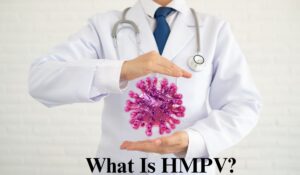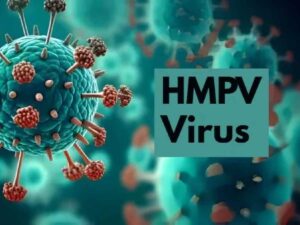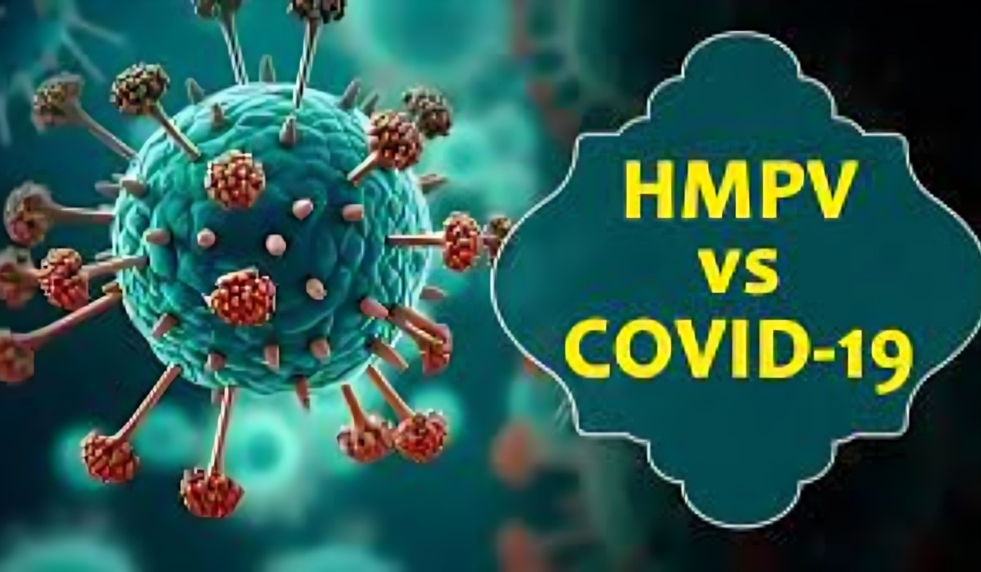Human Metapneumovirus (HMPV) along with COVID-19 are respiratory illnesses that pose risks to human health. Human Metapneumovirus (HMPV) and COVID-19 have similar transmission methods and symptoms but show substantial differences in severity levels and treatment possibilities. This blog examines both the differences and similarities between HMPV and COVID-19 through their clinical presentations as well as the populations at risk and preventive strategies.
What Is HMPV?

Researchers in the Netherlands first identified Human Metapneumovirus (HMPV) in 2001 thanks to Van den Hoogen and her team. Research shows that the Human Metapneumovirus (HMPV) has been present in human populations since the 1970s. Most people experience mild cold symptoms from HMPV infection but specific high-risk groups may develop serious respiratory conditions. The Human Metapneumovirus (HMPV) shares a close genetic relationship with respiratory syncytial virus (RSV) as they both belong to the Paramyxoviridae family.
What Is COVID-19?

The SARS-CoV-2 coronavirus initiated the COVID-19 pandemic which started in late 2019. COVID-19 exhibits a wider range of symptoms that can evolve from mild manifestations to severe systemic effects and multi-organ failure unlike HMPV. Global health systems and economies along with daily life have experienced profound changes because of the disease.
Similarities Between HMPV and COVID-19

Respiratory Symptoms Between HMPV Virus & COVID-19
Both HMPV and COVID-19 are respiratory viruses that commonly cause symptoms such as:
- Fever
- Cough
- Nasal congestion
- Shortness of breath
The severity of symptoms in both cases depends on factors including age and immunological status of the individual as well as any pre-existing health conditions.
Vulnerable Populations
Both viruses disproportionately affect certain groups, including:
- Infants and children under 5 years
- Elderly individuals
- People with weakened immune systems
- Those with underlying chronic medical conditions
Modes of Transmission of HMPV Virus & COVID-19
HMPV and Coronavirus spread through similar mechanisms:
- Respiratory droplets from coughing or sneezing
- Close personal contact with an infected person
- People contract these viruses when they touch contaminated surfaces and then their mouth, nose, or eyes.
Read Also : Concern Over HMPV Virus Spread in China
Key Differences Between HMPV and COVID-19
Symptoms of HMPV Virus & COVID-19
While both viruses cause respiratory symptoms, their clinical presentations differ:
- HMPV Symptoms: The main symptoms of HMPV include mild cold-like conditions featuring runny nose and low-grade fever. Severe cases can develop into bronchiolitis or pneumonia and acute respiratory distress syndrome (ARDS) and these conditions affect high-risk groups. Hospitalized children commonly show wheezing and respiratory distress.
- COVID-19 Symptoms: The range of COVID-19 symptoms varies from no symptoms to serious conditions including systemic problems like impaired sense of smell and taste as well as muscle pain and digestive issues. Severe cases of COVID-19 can develop into pneumonia, ARDS and lead to multi-organ failure.
Severity of HMPV Virus & COVID-19
COVID-19 has a more severe impact and proves more severe than that of HMPV. HMPV infections typically result in mild symptoms that resolve without medical intervention. However, COVID-19 can lead to severe system-wide complications and critical health conditions.
Management of HMPV Virus & COVID-19
- HMPV: Currently there are no antiviral medications or vaccines available to combat HMPV. Supportive treatment for HMPV spans antipyretics and antihistamines administration with oxygen therapy and mechanical ventilation in critical situations.
- COVID-19: COVID-19 patients benefit from widespread access to vaccines and antiviral treatments which greatly decrease the rate of serious complications. Doctors use supportive care to manage symptoms.
Systemic Impact
While multiple organ systems show complications in COVID-19 patients systemic effects are less frequently seen in those with HMPV infections. COVID-19 patients experience loss of smell and taste. However, such symptoms aren’t visible in HMPV infections.
Diagnosing HMPV and COVID-19
Diagnosing these infections often requires laboratory tests:

- HMPV Diagnosis: The preferred diagnostic method for identifying HMPV RNA is Polymerase Chain Reaction (PCR) testing from nasopharyngeal secretions. The Integrated Disease Surveillance Programme (IDSP) based in India regularly performs tests for respiratory viruses such as HMPV.
- COVID-19 Diagnosis: Medical professionals diagnose COVID-19 using PCR tests or rapid antigen tests to find SARS-CoV-2 RNA. Doctors may order further imaging tests and blood work when patients show severe symptoms of Coronavirus to evaluate systemic disease impact.
Preventive Measures of HMPV and COVID-19
Preventing the spread of both HMPV and COVID-19 relies on similar hygiene practices:
- Hand Hygiene: Practice hand washing often using soap and water and scrub for a duration between 20 to 30 seconds.
- Cough Etiquette: When you cough or sneeze make sure to cover both your mouth and nose.
- Mask-Wearing: Masks protect others by restricting the spread of respiratory droplets.
- Avoid Close Contact: Keep away from people who are sick and try to stay away from busy places.
- Surface Disinfection: To prevent virus transmission disinfect all frequently touched surfaces on a regular basis.
- Vaccination: Widespread vaccination campaigns help prevent coronavirus but such campaigns do not exist for HMPV.
Bottom Line
To effectively prevent and manage these diseases people need to understand how HMPV compares to COVID-19. HMPV mostly results in mild respiratory symptoms and has no specific antiviral treatments available while COVID-19 produces a wider array of symptoms but can be managed with targeted treatments and vaccines. Protecting individuals and communities from respiratory illness risks requires adherence to basic hygiene practices and staying informed about these viruses.
The HMPV virus alongside COVID-19 highlights why public health measures remain vital for fighting infectious diseases. Advancements in research will enhance our capacity to fight respiratory viruses through the creation of HMPV vaccines and therapies.

